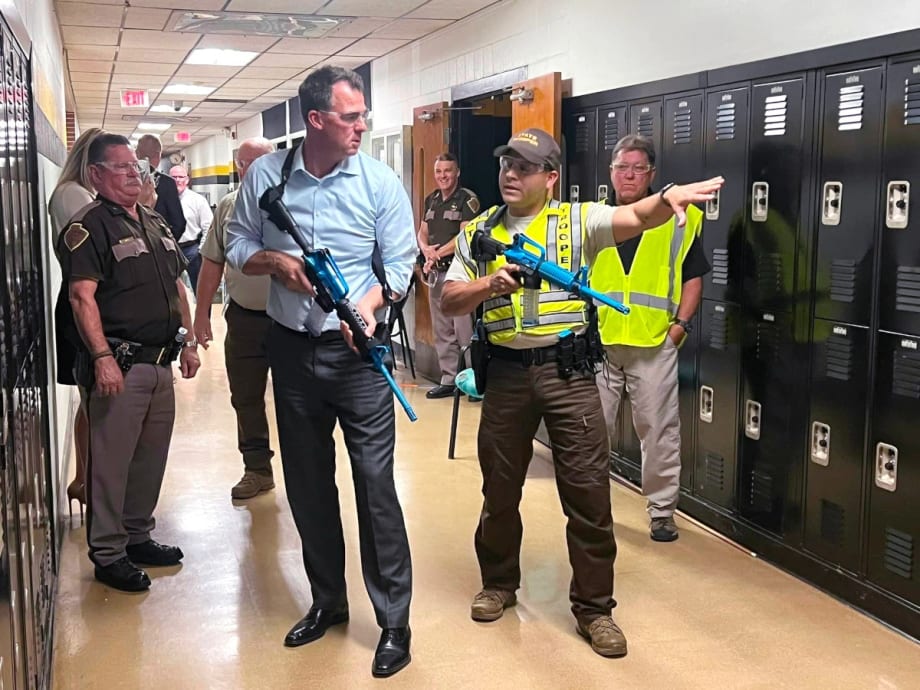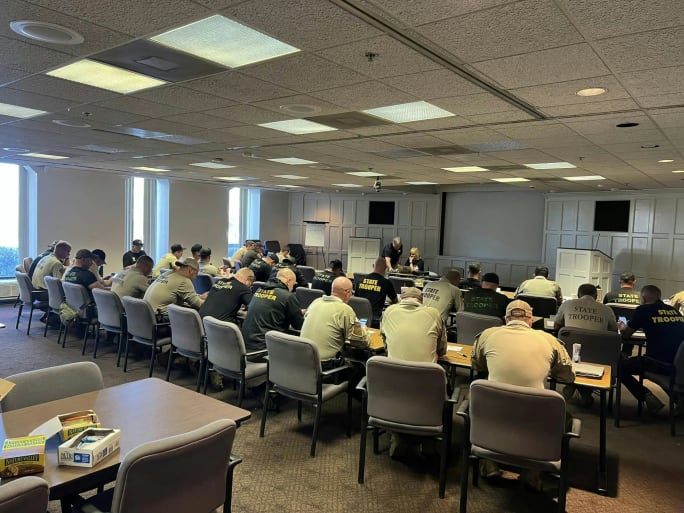While Oklahoma is now getting a foothold on using troopers to train the public to survive active shooters, Indiana has been doing something similar for years.
Indiana State Police’s program, Unarmed Response to an Active Shooter, has been in place since at least 2013 and is tailored based on security need – schools and buses, places of commerce, and terrorist related.
“Superintendent of State Police Doug Carter has made this a mission for the department,” says Richard Hogue, Indiana State Police corporate and school safety liaison for nearly a decade. “And we're just fortunate that, I would guess, well over 150 troopers have presented this program for free to a variety of different schools and businesses and places of worship across Indiana.”
The number of individuals trained in a single year has been as high as 19,127 in 2016 and Hogue estimates more than 80,000 people have been trained since the program’s inception.
“We've done everything from large groups to small groups. By large groups, I mean 400, 500, 600, and maybe a total of 1,000 people sometimes with some of the bigger businesses. Then we also have been doing it for small mom-and-pop shops and places of worship that are only 15 to 20 people,” explains Hogue. “So, all the credit goes to the Indiana State Police because they've invested the time and effort to train troopers to go out and provide this program.”















